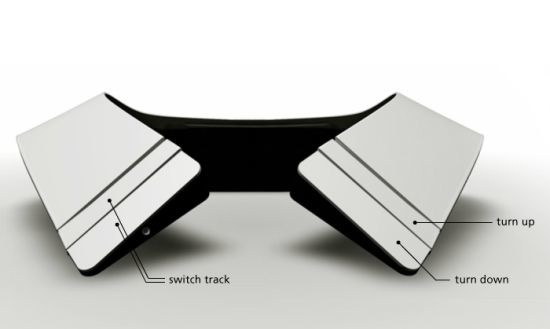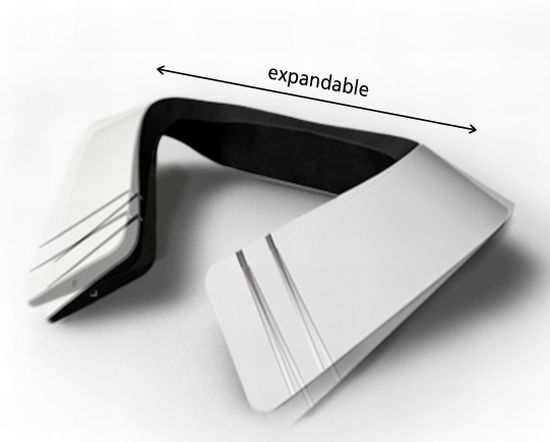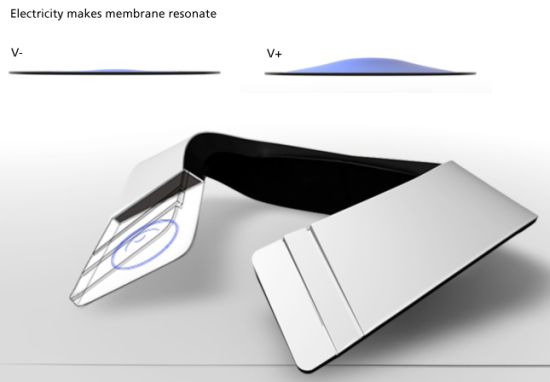
Most of us assume deaf people can't register sound, let alone enjoy Rachmaninoff. Wrong. A conceptual device from German designer Frederik Podzuweit taps into the deaf's ability to feel music.
Music for Deaf People is a collar that converts auditory input into vibrations, triggering the same sound-processing brain regions in those with full hearing. So instead of listening through your ears, you effectively listen through your skin. The collar has a special membrane substance, which responds to electricity, dispatching the vibrations of whatever you're playing--be it Sinatra or Sepultura--to your neck, shoulders, and collarbone. Adjustable, it fits snugly around your neck so you could theoretically wear it jogging or at the gym--never mind that it looks like something straight out of a Stormtrooper's closet. (Nerds probably think that's a good thing.)
To the uninitiated, it might seem like a nonstarter, a pointless gadget resigned to the annals of air-conditioned T-shirts and ShamWow! Why would deaf people want to "hear" music? The answer, of course, is for the same reason everyone else does: Music is one of life's enduring pleasures.

There's a lot of fascinating research into how deaf people experience music. Researchers at Ryerson University designed a chair that transmits musical vibrations along the back, turning sound into a sort of multi-sensory cheesecake. One person described it like this: “The first time I used the chair, I was blown away by the amount of information I could get about music from the vibrations. For the first time in my life, I could feel sad or happy because of how the music vibrations felt on my skin. I never felt those kinds of feelings before when music was played."

It's even possible, in certain cases, that deaf people experience music more powerfully because they can't hear; as Oliver Sacks tells it in Musicophilia, the auditory cortex might become extra-sensitive when hearing slips. Beethoven, you'll recall, was completely deaf when he composed his dazzling Symphony No. 9.
The main drawback we see in Music for Deaf People is that the collar seems terribly uncomfortable. On hot days, a big hunk of plastic is the last thing you want around your neck. Would the concept work just as well around your wrist or your bicep? If anyone has any ideas, we're all, um, ears.
